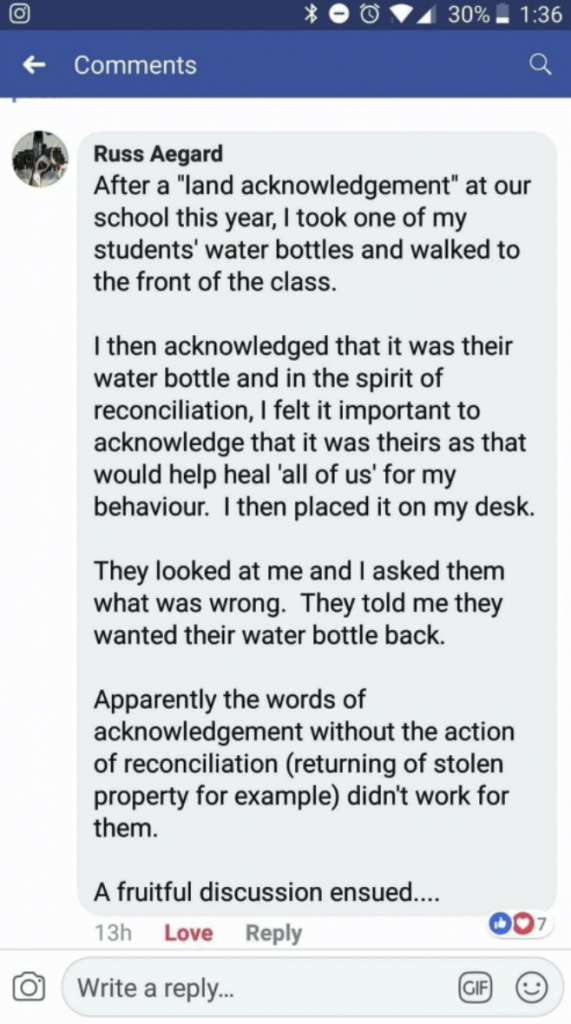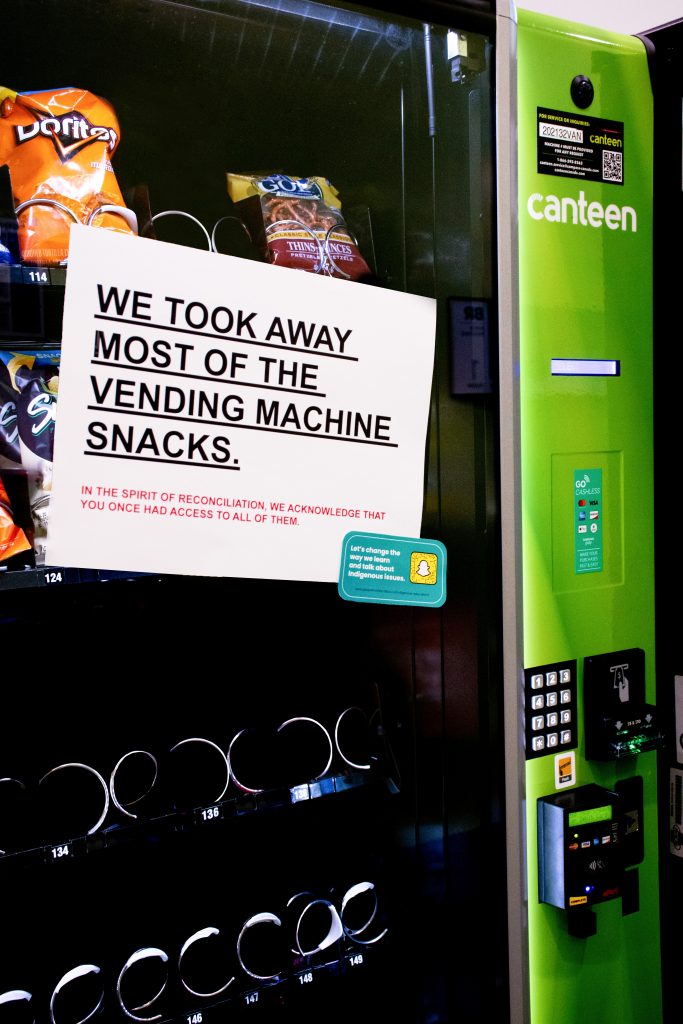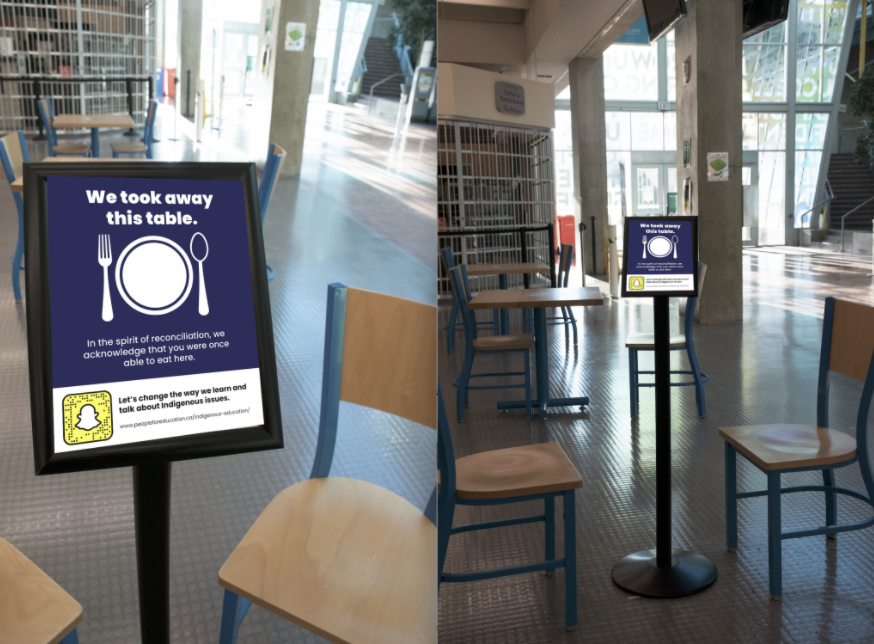Michelle and I were very keen on taking on the topic of land acknowledgments because of the amount of talk we saw on forums and social media. There was a Facebook post in particular that changed both my and Michelle’s views on land acknowledgments and made us curious if the actions we are doing are good enough in this day in age?

To us, land acknowledgments have always been something we’ve listened to in school assemblies without ever really thinking about the consequences that had happened and continue to happen to indigenous people. From this, we discovered that neither of us knew a whole lot about indigenous land and the harm colonization has done to its culture. Talking to others about this topic, we saw that it was common that people our age (students) didn’t know either, but were eager to make a change. Thus, from the list of 94 Calls to Action, we chose Call to Action #62; to develop and fund aboriginal content in education.
To what degree do land acknowledgments serve a purpose? Land acknowledgments had first come about to recognize the land of the people, a step to acknowledging the horrid actions of Canada’s history, yet the trauma remains for many Indigenous people as they are denied easy access to living essentials on their land. The goal for this project was to imitate these same emotions of the frustration of indigenous people and implement them in a way where others can see from their own point of view.
Michelle and I chose to do three guerilla advertisements; those that can be easily placed in locations highly visited by students. This would be accompanied by an interactive element to bring further attention to other ways we can do to support our indigenous communities.
The idea for our guerilla campaign was to focus on the idea that acknowledging something that was once present does not bring back what has been lost. This goes with the idea that acknowledging the territories of indigenous groups we live on does not mean that indigenous people will get entirely of their land back. To demonstrate this idea, we chose to use commonly found objects to show a new perspective on the situation.

Michelle was in charge of designing the signs while I went to the school campus to take and edit photos of the mockup guerilla campaigns. Not being the most profound photographer, I had ran into issues with lighting, and other unexpected issues that eventually lead me to spend a great amount of time during the editing phase of the project. We also played around with different variations of one idea that we ended up cutting it out entirely.

Based on the appealed demographic, we realized that using a preexisting app such as Snapchat would help bring students to take further action to the cause. On each guerilla ad, we placed a Snapcode that opens up a quick blurb about the land you are located on and the history you never knew about.

Sure this project had its struggles but I think the way Michelle and I were able to adapt to situations and still be able to convey our main message is not a doubt something to be pleased about.